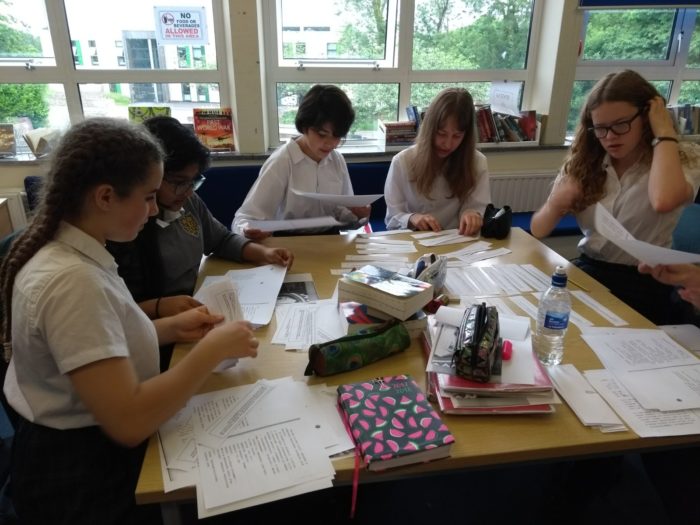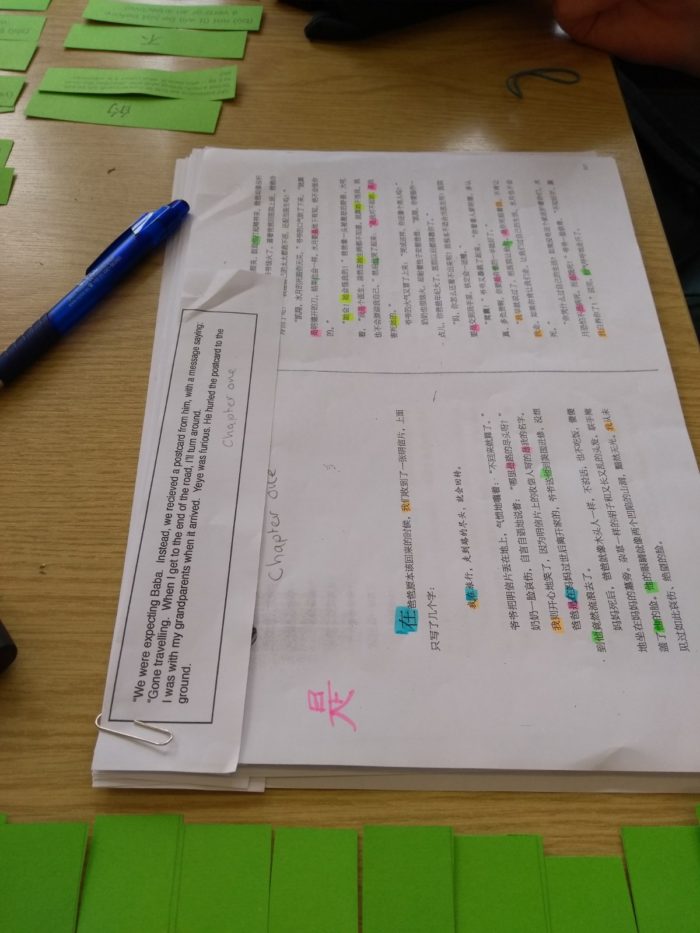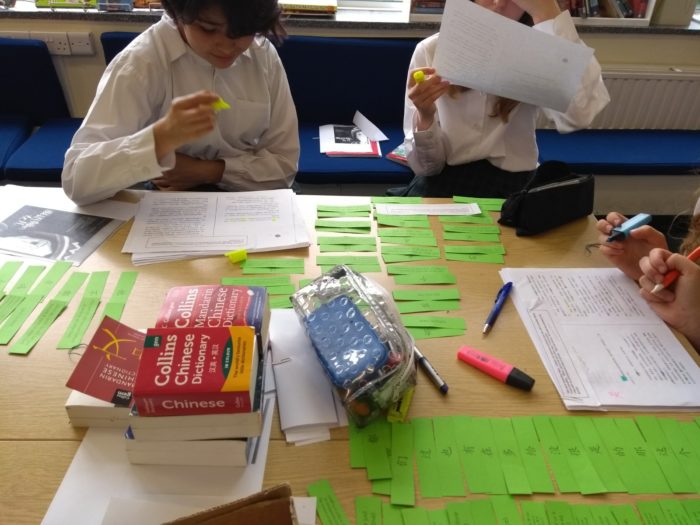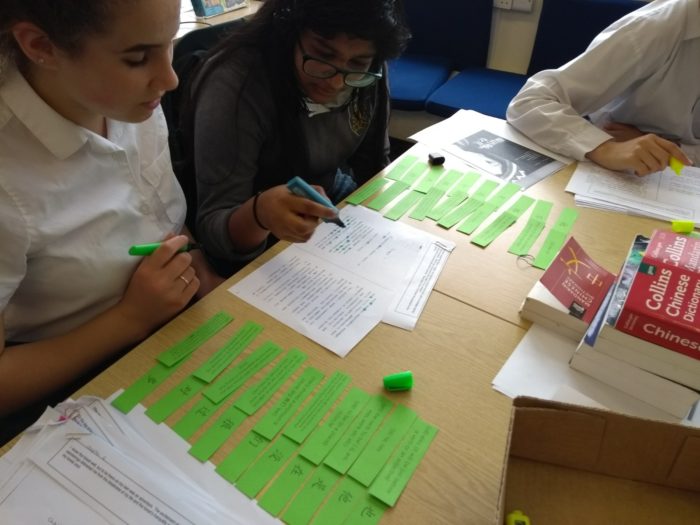Teaching The Ventriloquist's Daughter (1)
We are delighted that our Teaching Consultant and Advisory  Board member Dr Theresa Munford, of St Gregory's School in Bath, has created a blog series for us on the practicalities of using an authentic text to create a Y10 scheme of work. The text she has chosen is The Ventriloquist’s Daughter by Lin Man-chiu, translated by Helen Wang.
Board member Dr Theresa Munford, of St Gregory's School in Bath, has created a blog series for us on the practicalities of using an authentic text to create a Y10 scheme of work. The text she has chosen is The Ventriloquist’s Daughter by Lin Man-chiu, translated by Helen Wang.
Part 1. 6th June 2018
It is the start of the summer term. About six weeks of teaching are ahead of us and after a busy school year, I want to reward my hard working Y10s with a scheme of work with a difference.
Naturally, I want the learning to fit into the needs of the GCSE curriculum, but I also want to take the students beyond the humdrum language of text books. They are, after all, the ‘guinea pig year group’ for the new GCSE, with its requirement of exposure to ‘authentic texts’ A good excuse, I hope, to do some really interesting and slightly different work this term.
I call them ‘my perfect 10s’, a small group of six diligent and enthusiastic students. They started Chinese in Y9, with Jin Bu1, and have been working with the new AQA GCSE Chinese Textbook 1 (by Dragons in Europe) this year. We are up to the end of unit 5.
 A few of them are keen members of our St. Gregory’s Reading China book group. The Ventriloquist’s Daughter was the Autumn term read and they loved it. Two of the students recorded and posted a really interesting review on the Writing Chinese website. I’ve encouraged the others in this Y10 group to read the English version in readiness for this term.
A few of them are keen members of our St. Gregory’s Reading China book group. The Ventriloquist’s Daughter was the Autumn term read and they loved it. Two of the students recorded and posted a really interesting review on the Writing Chinese website. I’ve encouraged the others in this Y10 group to read the English version in readiness for this term.
My planning will be a little more ‘on the hoof’ than normal. My teaching load is reduced now the Y11s and Y13s have left and this gives me a bit more time and mental space to think creatively as I plan. I intend to post each individual lesson plan on this blog as I go along, with reviews of how the lesson went and how I see the next step.

My overall goals can be summed up as follows:
- To embed and consolidate the learning they’ve done so far in their GCSE course
- To cover most of the new grammar content in the final chapters of the GCSE Book 1 so they are able to start Book 2 fairly soon into Y11.
- To deepen their appreciation and understanding of the novel through encountering it in the original text, mindful that tackling a novel in its entirety at this stage in their Mandarin learning would be well nigh impossible.
- To reduce their fear of authentic texts as a step towards them becoming independent readers of Chinese.
- And finally, to produce a wonderful wall display to brighten the Mandarin classroom for the start of the September term!
Lesson 1: Using the text for Revision
Rationale:
Unfortunately, this term also sees the annual Year 10 exams, the second week back after half term. They’ll do a Reading paper and a Writing paper modelled on the new GCSE specification (AQA). I shall try to accommodate a speaking and a listening assessment in their usual lesson time.
So, the first two lessons in this SOW will have to be linked to their revision. Lesson 1, I have linked to reading revision. I have noticed over the years of teaching Mandarin, that students who diligently learn vocabulary, often stumble on high-frequency words, such as grammar markers, conjunctions and so on when doing reading assessments. Several years ago, I created a couple of Quizlet vocabulary sets, playfully called TBO and TBO 2.0 (The Bloomin’ Obvious) by a colleague (see the link on the lesson plan). So, my first lesson includes some rapid revision of these using pages photocopied from The Ventriloquist’s Daughter.

The first two parts of the lesson, however, are designed to draw them back into the book itself.
The starter is a quick dictionary exercise to look up the characters in the title, only one of which would be unfamiliar (腹),the second part of the lesson is designed to help them with ‘forensic’ reading, trying to guess meanings and contexts with a limited number of recognisable characters. Most of the work in this lesson is paired activity, which minimised the photocopying needs, but I would imagine that with larger sized classes of 15 or more, some of the paperwork would need to be done on a smart board to cut down on preparation time.
Review
I was really pleased by the way the lesson went. There were a few hiccups, for example some of the smaller dictionaries we have in school didn’t have the character 腹, I should have checked first! But the students with the larger dictionaries found it and we had an interesting discussion about what ventriloquism has to do with stomachs. (As I write this blog, I’ve suddenly clocked that we get our English word from the Latin for stomach; to quote the Collins Dictionary: ‘Origin: L.ventriloquus a person who speaks by a spirit in the belly, from venter the belly and loqui to speak)

The exercise linking the photocopies of the first page of each chapter in Chinese version to the first few lines of the English version absorbed them for at least 20 minutes. It also helped them recall the key events in the story, the ‘spooky’ bits and the poignant bits. This in turn motivated the couple of students who hadn’t got around to reading the translation over half term to read it before we next meet.

They said the review of the TBO words using flash cards was really useful and they enjoyed the rapid ‘hunt the characters’ with highlighters, some of them going one step further and highlighting different words with different colours. (Nothing like having a few stationery addicts in the class!)
We didn’t have time for the final plenary but I plan to link Lesson 2 later this week to the topic of describing people as that is a key revision topic for their exam next week.
Downloads:
Chapter first lines in English not in order (002)
( to be continued...)
